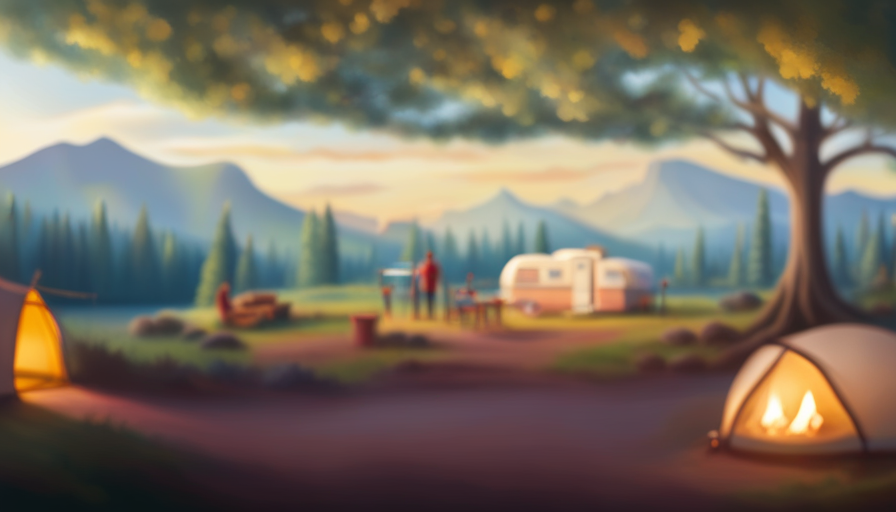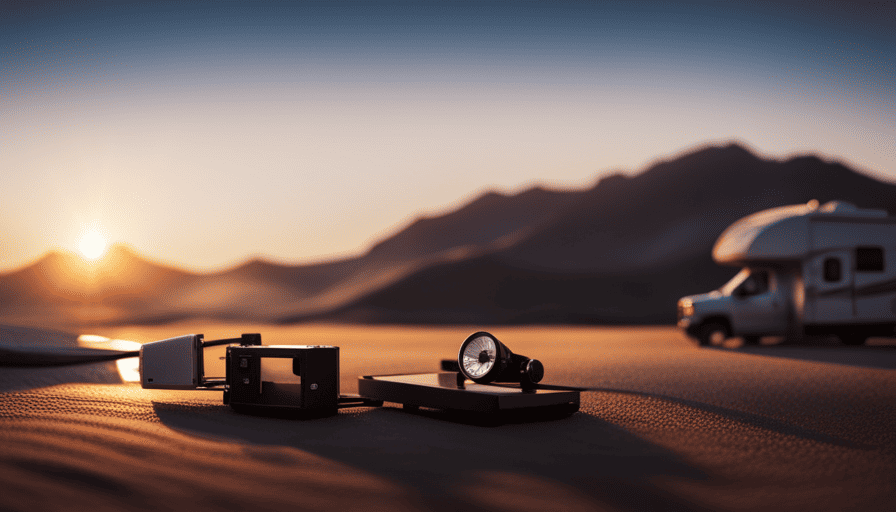Looking for the ideal SUV to haul your treasured camper? Your search ends here! In this article, we’re going to dive into a variety of SUVs that are outstanding in towing campers effortlessly. No matter if you’re gearing up for a nationwide trek or a short escape over the weekend, these robust vehicles promise to provide a seamless and delightful travel experience.
First up, the Ford Expedition. With its robust towing capacity and impressive engine performance, this SUV is a popular choice among camping enthusiasts.
Next, the Chevrolet Tahoe offers a blend of power and comfort, making it an ideal companion for long hauls.
The Toyota 4Runner, Jeep Grand Cherokee, and Nissan Armada also boast remarkable towing capabilities, making them worthy contenders in the SUV market.
For those seeking a touch of luxury, the Dodge Durango provides both style and strength.
Meanwhile, the Subaru Ascent, Volkswagen Atlas, and Honda Pilot offer versatile options for families with ample towing needs.
So, whether you’re embarking on a camping expedition or simply seeking the freedom of the open road, these SUVs are sure to deliver unmatched towing prowess. Let’s dive into the details and find the perfect SUV to enhance your camping experience!
Key Takeaways
- Ford Expedition has the highest towing capacity of up to 9,300 pounds and offers impressive fuel economy, spacious interior, and advanced technology and safety features.
- Chevrolet Tahoe offers a towing capacity of up to 8,600 pounds and provides a spacious interior with comfortable seating, but it may impact fuel efficiency and handling due to its size and increased strain on the engine and brakes.
- Toyota 4Runner has a towing capacity of up to 5,000 pounds and features a powerful V6 engine, trailer sway control system, and integrated towing hitch receiver and wiring harness.
- Jeep Grand Cherokee offers off-road capabilities, a towing capacity of up to 7,200 pounds, advanced four-wheel drive system, and a smooth and comfortable ride.
Ford Expedition
If you’re looking for an SUV that can effortlessly tow a camper, look no further than the Ford Expedition! When it comes to fuel efficiency comparison, the Expedition stands out among its competitors. With its EcoBoost engine, it offers impressive fuel economy, ensuring you won’t have to constantly stop for refueling on your camping adventures.
But what truly sets the Expedition apart is its towing capacity. With a maximum towing capacity of up to 9,300 pounds, this SUV is a powerhouse on the road. Whether you have a small camper or a larger one, the Expedition can handle the load with ease. Its strong frame and advanced technology make towing a breeze, giving you peace of mind while on the road.
In addition to its impressive towing capabilities, the Ford Expedition also offers a spacious and comfortable interior. With plenty of room for both passengers and cargo, you can bring all your camping essentials without sacrificing comfort. Plus, the Expedition comes equipped with modern features and advanced safety technologies to enhance your driving experience.
Now, let’s transition to the next section about the Chevrolet Tahoe.
Chevrolet Tahoe
The Chevrolet Tahoe is a powerful road companion, effortlessly towing vacation homes on wheels. When it comes to finding the best SUV for towing campers, the Chevrolet Tahoe stands out as a top contender. With its robust engine and sturdy build, it has the capability to handle the demands of towing with ease.
One of the pros of towing with an SUV like the Chevrolet Tahoe is its impressive towing capacity. The Tahoe can tow up to 8,600 pounds, making it suitable for pulling a wide range of camper sizes. Additionally, its spacious interior and comfortable seating make it a great choice for long road trips.
However, there are a few cons to consider when towing with an SUV. The increased weight and size of a camper can affect the SUV’s fuel efficiency and handling. Additionally, towing a camper places extra strain on the vehicle’s engine and brakes, requiring regular maintenance and potentially increasing repair costs.
Transitioning into the subsequent section about the Toyota 4Runner, it’s important to note that while the Chevrolet Tahoe is a capable SUV for towing campers, there are other options worth exploring. One such option is the Toyota 4Runner, which offers its own set of unique features and capabilities.
Toyota 4Runner
Get ready to explore the exciting features and capabilities of the Toyota 4Runner, the best SUV for towing campers. With its impressive towing capacity, rugged design, and top-notch features, the 4Runner is a fantastic choice for all your towing adventures.
The Toyota 4Runner boasts a towing capacity of up to 5,000 pounds, making it one of the most capable SUVs in its class. Whether you’re hauling a small camper or a larger trailer, the 4Runner can handle it with ease. Its powerful V6 engine provides the necessary horsepower and torque to conquer any towing challenge.
When it comes to towing, the 4Runner has several top features to consider. Firstly, it offers a trailer sway control system that helps keep your camper stable and in line while on the road. This feature is especially useful when dealing with crosswinds or uneven terrain. Additionally, the 4Runner comes equipped with an integrated towing hitch receiver and wiring harness, making it easy to connect your camper and get on your way.
As we transition into the subsequent section about the Jeep Grand Cherokee, it’s important to note that while the 4Runner excels in towing capabilities, the Grand Cherokee offers a different set of features and advantages. So, let’s dive into the world of the Grand Cherokee and explore its unique offerings.
Jeep Grand Cherokee
With its sleek and powerful design, the Jeep Grand Cherokee effortlessly navigates rugged terrains, inviting you to embark on thrilling adventures. Known for its off-road capabilities and impressive towing capacity, the Grand Cherokee is a top choice for those seeking an SUV that can pull a camper.
The Jeep Grand Cherokee is built to tackle any off-road challenge you throw at it. With its advanced four-wheel drive system, it provides excellent traction and stability, allowing you to confidently navigate through rocky trails and muddy terrains. Whether you’re camping in the mountains or exploring remote wilderness areas, the Grand Cherokee ensures a smooth and comfortable ride.
In terms of towing capacity, the Grand Cherokee doesn’t disappoint. With its powerful engine options and robust chassis, it can tow up to 7,200 pounds, depending on the configuration. This means you can easily tow your camper or trailer without worrying about exceeding the vehicle’s capabilities.
Transitioning to the subsequent section about the Nissan Armada, we can see that while the Jeep Grand Cherokee offers impressive off-road capabilities and towing capacity, the Armada brings its own unique features to the table.
Nissan Armada
Ready to experience the thrill of conquering any terrain in the impressive Nissan Armada? Look no further if you’re searching for the best SUV for camping. With its remarkable towing capacity, the Nissan Armada is an excellent choice for pulling a camper.
The Armada boasts a maximum towing capacity of up to 8,500 pounds, making it capable of handling most campers with ease. Equipped with a powerful V8 engine and a robust frame, the Armada delivers the strength and stability required for towing. Whether you’re navigating steep hills or rough terrains, this SUV is up for the challenge.
Its spacious interior ensures that you and your fellow adventurers have ample room to relax and enjoy the ride. Additionally, the Armada is equipped with advanced safety features such as trailer sway control and a rearview camera, providing peace of mind while towing. These features help maintain stability and visibility, ensuring a safe and enjoyable camping experience.
Now that we’ve explored the Nissan Armada’s towing capabilities, let’s transition to the next SUV in our lineup: the GMC Yukon.
GMC Yukon
If you’re in the market for an impressive vehicle that excels in conquering any terrain, the GMC Yukon is calling your name. With its robust towing capacity, the GMC Yukon is an excellent choice for those looking to tow a camper on their outdoor adventures.
Boasting a towing capacity of up to 8,400 pounds, this SUV has the power to handle most camper trailers with ease. Using an SUV like the GMC Yukon for camping trips has numerous benefits. Firstly, the spacious interior offers ample room for both passengers and gear, ensuring a comfortable and organized journey. Additionally, SUVs are equipped with advanced technology and safety features, providing peace of mind during long drives and off-road explorations.
The GMC Yukon’s exceptional towing capacity means you can bring along all your camping essentials without compromising on comfort or convenience.
Transitioning into the subsequent section about the Dodge Durango, another SUV that excels in towing capabilities, let’s delve into its impressive features and why it’s a worthy contender for your next camping adventure.
Dodge Durango
When you step inside the Dodge Durango, you’ll be amazed by its spacious interior and powerful capabilities for your next camping adventure. This SUV isn’t just stylish and comfortable, but it also has an impressive towing capacity that makes it an excellent choice for pulling a camper. Here are four reasons why the Dodge Durango is the perfect SUV for your camping needs:
-
Dodge Durango towing capacity: With a maximum towing capacity of up to 8,700 pounds, the Dodge Durango can easily handle most camper sizes. Whether you have a small pop-up camper or a larger travel trailer, this SUV has the power to tow it with ease.
-
Best Dodge Durango model for towing: The Dodge Durango R/T and SRT models come equipped with a 6.4-liter V8 engine, providing the necessary power for towing heavy loads. These models also feature performance-tuned suspension and brakes, ensuring a smooth and controlled towing experience.
-
Spacious interior: The Dodge Durango offers seating for up to seven passengers, making it ideal for family camping trips. With ample legroom and cargo space, you can comfortably pack all your gear and still have room for everyone to relax during the journey.
-
Advanced towing features: The Dodge Durango is equipped with advanced towing features, such as trailer sway control and an integrated trailer brake controller. These features help enhance stability and control while towing, giving you peace of mind on the road.
With its impressive towing capacity and spacious interior, the Dodge Durango is an excellent choice for towing a camper on your next adventure. Speaking of capable SUVs, let’s now transition into the subsequent section about the Subaru Ascent.
Subaru Ascent
As you step inside the Subaru Ascent, you’ll be swept away by its spaciousness and remarkable capabilities, making it a true sanctuary for your next outdoor adventure. The Subaru Ascent offers a generous amount of passenger and cargo space, with seating for up to eight people and a maximum cargo capacity of 86.5 cubic feet.
This means you can bring along all your camping gear, including tents, coolers, and sleeping bags, without sacrificing comfort or convenience.
One of the standout features of the Subaru Ascent is its towing capacity. With a maximum towing capacity of 5,000 pounds, the Ascent can easily pull a camper or trailer, making it an ideal choice for those who love to explore the great outdoors. Additionally, the Ascent comes equipped with Subaru’s symmetrical all-wheel drive system, ensuring that you have the traction and stability you need when towing on uneven terrain.
When comparing the Subaru Ascent to other SUVs in its class, it holds its own. The Ascent offers a smooth and comfortable ride, with responsive handling and impressive fuel efficiency. It also comes with a host of safety features, including Subaru’s EyeSight driver-assistance technology, which helps to prevent accidents and keep you and your passengers safe on the road.
Transitioning into the subsequent section about the Volkswagen Atlas, it’s worth noting that the Subaru Ascent offers a unique combination of space, towing capacity, and safety features that sets it apart from its competitors.
Volkswagen Atlas
After discussing the Subaru Ascent and its capabilities for towing a camper, let’s now shift our focus to another impressive SUV in this category: the Volkswagen Atlas.
With its strong towing capacity and notable features, the Atlas is a reliable option for those seeking a vehicle to pull their camper.
One of the best features of the Volkswagen Atlas is its spacious interior. With three rows of seating, it can comfortably accommodate up to seven passengers, making it perfect for family camping trips. Additionally, the Atlas offers ample cargo space, allowing you to easily store all your camping gear.
When it comes to towing, the Volkswagen Atlas doesn’t disappoint. It boasts a maximum towing capacity of up to 5,000 pounds, which is more than enough to pull most campers. Whether you have a small trailer or a larger RV, the Atlas is up to the task.
In terms of price, the Volkswagen Atlas is competitively priced compared to other SUVs in its class. Starting at around $31,000, it offers great value for its features and capabilities.
Transitioning to the next section, let’s now explore another popular SUV that is worth considering for pulling a camper: the Honda Pilot.
Honda Pilot
Next, let’s delve into the capabilities of the Honda Pilot, a highly regarded option for those in search of a reliable vehicle to tow their camping equipment.
The Honda Pilot offers several advantages when it comes to towing, making it a popular choice among camping enthusiasts. One of the main advantages of towing with the Honda Pilot is its impressive towing capacity. With a maximum towing capacity of up to 5,000 pounds, the Pilot can easily handle a wide range of camper sizes and weights. This means that whether you have a small pop-up camper or a larger travel trailer, the Pilot has the power to tow it with ease.
In addition to its towing capacity, the Honda Pilot also offers a range of features that make towing a camper a breeze. The Pilot comes equipped with a Trailer Stability Assist system, which helps to keep your camper stable and in line while towing. This is especially important when navigating winding roads or dealing with crosswinds.
When it comes to towing a camper with the Honda Pilot, there are a few tips to keep in mind. First, it’s important to make sure that your camper is properly loaded and balanced. Be sure to distribute the weight evenly and secure any loose items inside the camper. Additionally, it’s a good idea to invest in towing mirrors to improve visibility while on the road.
Overall, the Honda Pilot is a reliable and capable SUV for towing a camper. With its impressive towing capacity and helpful features, it’s no wonder why it’s a popular choice among camping enthusiasts.
Frequently Asked Questions
How many passengers can the Ford Expedition accommodate?
With its spacious interior, the Ford Expedition can comfortably accommodate up to eight passengers. This makes it an ideal choice for larger families or groups. The maximum seating capacity ensures that everyone can enjoy a comfortable ride. The interior features provide both convenience and luxury. From the advanced infotainment system to the premium upholstery, the Expedition offers a truly enjoyable and refined driving experience for all occupants.
What is the maximum towing capacity of the Chevrolet Tahoe?
The maximum towing capacity of the Chevrolet Tahoe is an impressive 8,600 pounds. With this capability, the Tahoe is well-equipped to handle a wide range of towing needs. Whether it’s a boat, trailer, or small camper, the Tahoe can confidently handle the load.
Its powerful engine, sturdy construction, and advanced towing features make it a reliable choice for those seeking a capable SUV for their towing requirements.
Does the Toyota 4Runner have a third-row seating option?
Yes, the Toyota 4Runner does offer a third-row seating option, providing ample space for larger families or extra passengers. This feature is a great advantage when considering the best SUV for camping, as it allows for additional seating and flexibility.
With its rugged design and reliable performance, the 4Runner is a popular choice among outdoor enthusiasts. Its versatility and capability make it an excellent option for both everyday commuting and adventurous camping trips.
What is the fuel efficiency of the Jeep Grand Cherokee?
The fuel efficiency of the Jeep Grand Cherokee is quite impressive. It offers a range of engine options, each with its own fuel economy ratings.
The most fuel-efficient model is the diesel-powered Grand Cherokee, which boasts an impressive MPG rating. However, it’s important to note that the fuel economy can vary depending on factors such as driving conditions and individual driving habits.
Overall, the Jeep Grand Cherokee offers a good balance of power and fuel efficiency.
Can the Nissan Armada be equipped with a towing package?
Yes, the Nissan Armada can be equipped with a towing package. The Armada has a towing capacity of up to 8,500 pounds when properly equipped, making it a suitable option for pulling a camper. Nissan offers various towing package options for the Armada, which include features like a receiver hitch, wiring harness, and trailer sway control. These options ensure that the Armada is capable and safe for towing purposes.
Conclusion
In conclusion, there are several SUVs that can pull a camper. The Ford Expedition, Chevrolet Tahoe, and Toyota 4Runner are popular choices due to their strong towing capacities. However, an interesting statistic to note is that the Dodge Durango actually has the highest towing capacity among these SUVs, with an impressive 8,700 pounds. This makes it a great option for those who have larger campers or trailers.
Ultimately, the choice of which SUV to use will depend on individual preferences and needs.



















